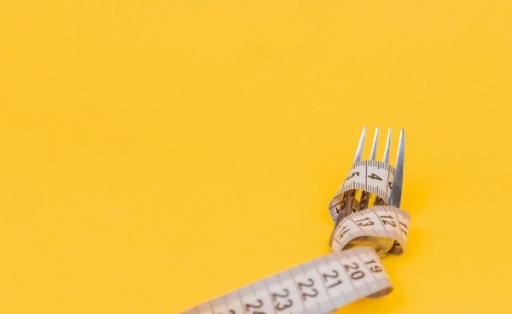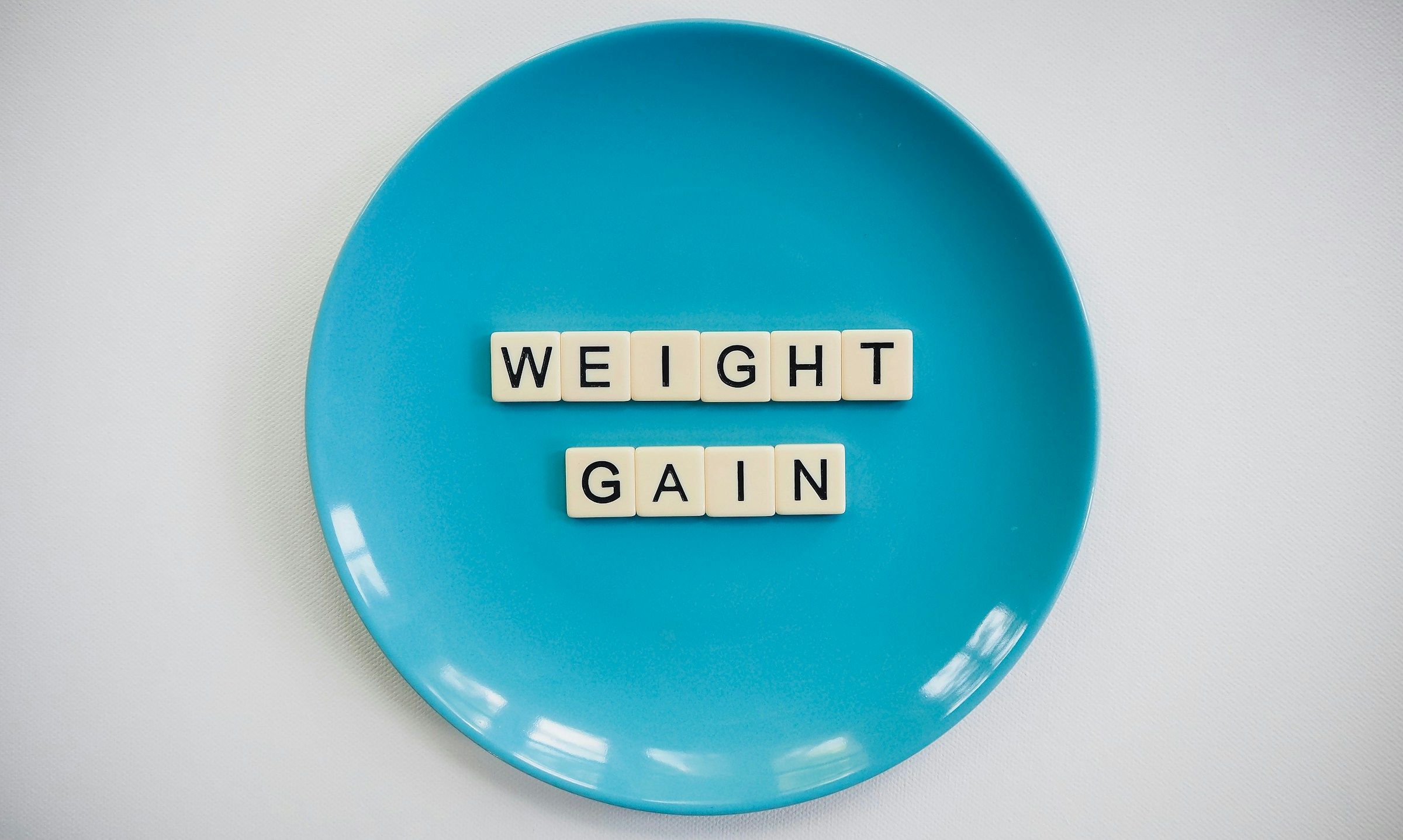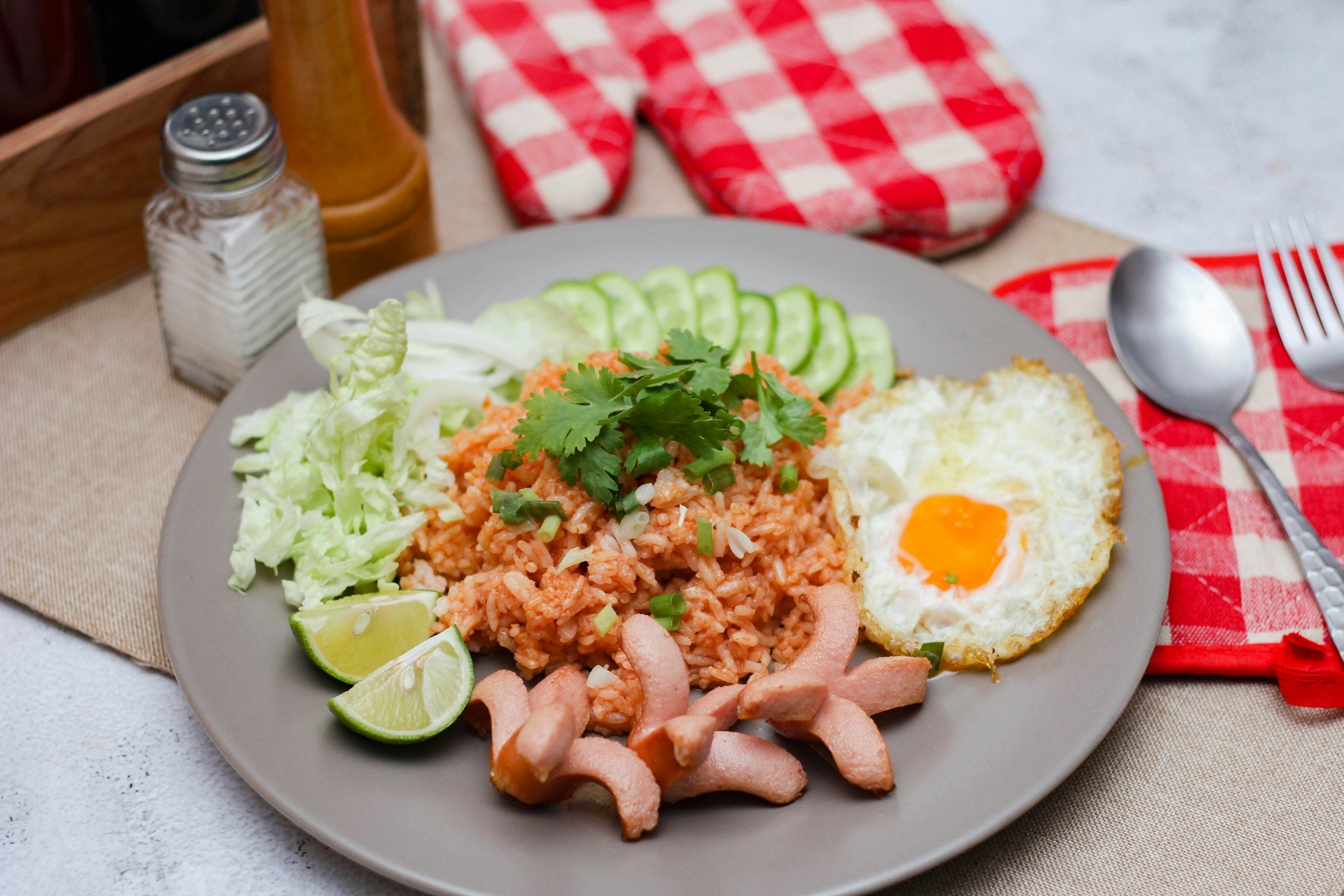Imagine this: you’re halfway through your workday, and your energy starts to plummet. Before you know it, you’re Googling “how to stay awake at work” instead of doing your job. Sound familiar? Energy crashes like this can happen for several reasons, but one of the most common culprits is poor meal composition. Finding the right balance of calories per meal can help you maintain steady energy throughout the day to avoid those annoying crashes. But how many calories should be in one meal? The answer will depend on several factors, including personal goals, activity level, and metabolic health. This article will offer valuable insights to help you find your ideal calorie per meal number to achieve your goals and stop feeling fatigued. So, how are calories measured?
Goldi AI’s calorie tracker can help you find the right balanced calories per meal to avoid energy crashes and maintain steady energy throughout the day. This easy-to-use tool simplifies meal planning so you can focus on what matters most to you.
How Many Calories Should You Eat in a Day?
 We all want to know how many calories we should eat to reach our health goals. Unfortunately, there is no one-size-fits-all answer. Your ideal calorie intake depends on multiple factors, including:
We all want to know how many calories we should eat to reach our health goals. Unfortunately, there is no one-size-fits-all answer. Your ideal calorie intake depends on multiple factors, including:
- Age
- Weight
- Gender
- Height
- Activity level
According to United States dietary guidelines, adults over 21 should consume between 1,600 and 3,000 calories daily.
The Importance of Caloric Intake
Calories matter, whether your goal is to:
- Gain weight
- Lose weight
- Maintain your current weight
A calorie measures the energy in food. To maintain your weight, energy in must equal energy out (average calories consumed per day vs. average calories burned daily).
Eat fewer calories than you burn, and you’ll lose weight. But if you consume more calories than you need, your body stores that energy for later (in the form of extra padding on your hips and around your middle).
What Affects Daily Caloric Needs?
Everybody’s daily calorie needs are different, making it hard to figure out the magic number. In general, men and people assigned male at birth (AMAB) need more calories than women and people assigned female at birth (AFAB).
Active people need more than those who have desk jobs. And younger people need more than older people, whose metabolisms slow down as they age.
These factors can impact your caloric intake:
- Sex
- Height
- Weight
- Age
- Activity level
- Hormones
- Medications
Understanding and Calculating Your Basal Metabolic Rate (BMR)
Your basal metabolic rate (BMR) is the minimum daily calories your body needs to function while resting. Your BMR contains about 60% to 70% of the energy used by your body—and this number is unique to you. And that number can change if you’re trying to lose, gain, or maintain your body weight. So, how do you calculate your BMR? If you wear a smartwatch to track your fitness, BMR is used to develop your daily goals. You can also find BMR calculators online.
“BMR is an essential starting point for calculating calories, although is it an estimate and is not 100% accurate,” clarifies Zumpano. “The most accurate means of measuring your BMR is direct calorimetry or indirect calorimetry, although those methods are not commonly used or available, therefore the Mifflin St-Joer equation is best to use and is only about 10% off. Most health professionals, apps and online calorie calculators use this equation.”
Caloric Intake Recommendations by Age and Activity Level
While knowing how many calories you need each day is good, what kind of calories you consume also matters. You may have heard of “empty calories.” These can be found in junk foods, sugar-sweetened beverages, and processed foods—items that typically contain:
- Added sugar
- Trans fat
- Unnecessary fat and calories
While you might get a boost of energy from consuming those foods, they tend to be void of nutrition, specifically:
- Fiber
- Minerals
- Vitamins
The Impact of Empty Calories on Cravings, Fatigue, and Health
Those empty calories won’t satisfy you and are designed to make you want more, leading to food cravings and overconsumption. You may even feel tired. These foods also promote inflammation and gut dysbiosis, inhibiting weight loss and eventually leading to disease. Instead, focus on eating a well-balanced diet of:
- Fruits and vegetables
- Lean meats
- Whole grains
- Nuts
- Seeds
“Think about the foods you often crave—an apple or Brussels sprouts often don’t come to mind,” notes Zumpano. “Empty calorie foods cause craving and overconsumption leading to excess calories and poor nutrition intake.”
Calorie Guidelines for Different Activity Levels and Age Groups
So, how many average calories per day should you aim for? The U.S. Department of Agriculture (USDA) shares its recommended calories per day:
Calories per day for women and people AFAB
Women and People AFAB
- Ages 21–25: 2,000 (sedentary), 2,200 (moderately active), 2,400 (active)
- Ages 26–30: 1,800 (sedentary), 2,000 (moderately active), 2,400 (active)
- Ages 31–50: 1,800 (sedentary), 2,000 (moderately active), 2,200 (active)
- Ages 51–60: 1,600 (sedentary), 1,800 (moderately active), 2,200 (active)
- Ages 61+: 1,600 (sedentary), 1,800 (moderately active), 2,000 (active)
Men and People AMAB
- Ages 21–25: 2,400 (sedentary), 2,800 (moderately active), 3,000 (active)
- Ages 26–35: 2,400 (sedentary), 2,600 (moderately active), 3,000 (active)
- Ages 36–40: 2,400 (sedentary), 2,600 (moderately active), 2,800 (active)
- Ages 41–45: 2,200 (sedentary), 2,600 (moderately active), 2,800 (active)
- Ages 46–55: 2,200 (sedentary), 2,400 (moderately active), 2,800 (active)
- Ages 56–60: 2,200 (sedentary), 2,400 (moderately active), 2,600 (active)
- Ages 61–65: 2,000 (sedentary), 2,400 (moderately active), 2,600 (active)
- Ages 66–75: 2,000 (sedentary), 2,200 (moderately active), 2,600 (active)
- Ages 76+: 2,000 (sedentary), 2,200 (moderately active), 2,400 (active)
Source: Dietary Guidelines for Americans 2020-2025, Office of Disease Prevention and Health Promotion).
“Keep in mind, these calorie recommendations are for people who are at a normal weight,” states Zumpano. “If your weight is above the normal range for your height and your goal is weight loss, you need to consume less. A deficit of 500 calories can provide a weight loss of 1 pound per week.”
Caloric Needs Based on Goals
Here are some healthy ways to maintain, add, or lose weight, depending on your goals.
- If you want to gain weight, don’t just focus on eating more. You want to make sure you add weight healthily.
- Opt for high-calorie, nutrient-dense foods like meat, fatty fish, eggs, full-fat yogurt, whole grains, nuts, and oils.
- You should also consider eating more often and looking for ways to add extra calories to each meal.
For example, add nuts or seeds to your yogurt, oatmeal, or cereal. “Don’t forget to include more liquid calories that won’t leave you feeling too full by the next meal,” advises Zumpano. “Opt for high-calorie beverages like whole milk, cream, 100% fruit and vegetable juices, smoothies, and high-calorie nutrition shakes.”
The Risks of Extreme Calorie Restriction and the Importance of Balanced Weight Loss
- If you’re trying to lose weight, you might be tempted to reduce your calorie count to reach your goals drastically.
- But proceed with caution, Zumpano says. If you eat fewer than 1,200 calories daily to lose weight, getting all the nutrients you need to stay healthy is challenging.
- Eating too little can work against you—it can halt weight loss and even lead to weight gain due to being in starvation mode, which leads to fat storage. What’s more, extreme calorie restriction might backfire.
How many calories do I burn a day? On average, you may burn anywhere from 1,300 to 2,000 calories without physical activity. You can add some extra exercise to burn more calories. “Regular exercise not only burns calories, which means you don’t need to cut back as much, but it also builds muscle, which uses up more calories, increasing your BMR,” explains Zumpano. “This allows for a more balanced diet and the ability to get all the nutrients you need.”
The Key Factors for Maintaining Weight and Managing Caloric Balance
If your goal is to maintain your current weight, Zumpano says you need to balance how many calories you eat or drink with the same amount of calories you burn through physical activity and exercise.
“Weight maintenance can be tricky because your caloric needs change all the time,” she says. “Factors such as age, increased or decreased muscle mass, change in activity, health conditions and medications can influence your weight without you even realizing it.”
How Many Calories Should Be In One Meal?

Caloric Distribution: What You Eat Matters More Than How Much You Eat
Calorie distribution depends on how many total calories you eat daily and how you space them over meals. A typical adult woman needs about 1,600 to 2,400 calories per day. The typical man needs 2,000 to 3,000 calories. So, for a woman, this means 533 to 800 calories per meal if you eat three meals.
For a man, this means 667 to 1,000 calories per meal. You should eat more at lunch or dinner. Still, according to the American Diabetes Association, evenly spaced meals are best if you have diabetes or are trying to manage your blood glucose level. The guidelines say that your needs can vary considerably, depending on your:
- Height
- Weight
- Activity level
- Metabolism
How to Calculate Your Caloric Needs for Weight Maintenance
A good rule of thumb to determine the calories you need to maintain your current weight is multiplying your weight by 15, according to this Harvard Health calorie calculator. If you’re a 5-foot, 4-inch tall woman and weigh 155 pounds, you’ll eat 2,325 calories to keep you at that weight.
If you divide that into thirds, you will need 775 calories for each meal. If you eat smaller, more frequent meals, consider what you eat at those meals when calculating your caloric needs.
Setting a Calorie Goal: Why You Shouldn’t Just Cut Calories
You may be looking at different strategies to cut your calories. You may think, “Will eating a big breakfast help me lose weight?” The answer is it depends. If you eat a more extensive breakfast and you can cut back on the number of calories you eat in later meals, you likely will lose weight.
Harvard Health says that losing 1 to 2 pounds weekly is a safe weight loss rate for many people. You can cut 500 to 1,000 calories per day. That means if you eat 2,325 calories daily, you’ll cut back to 1,325-1,825 calories. If you aim to lose 1 pound a week, that’s over 600 calories per meal at three meals a day. If your goal is to lose 2 pounds weekly, it’s about 333 calories per meal.
The Role of Physical Activity and Caloric Deficit in Safe Weight Loss
Another way of approaching weight loss is to build in physical activity. Harvard Health suggests 30 minutes of physical activity daily and consuming 500 fewer calories, or about 167 fewer calories per meal, if you eat three meals daily.
Don’t consider dropping below 1,200 calories per day if you’re a woman or 1,500 calories per day if you’re a man. Harvard Health cautions you unless you’re doing this under the supervision of a health professional. You risk not eating enough nutrients if your calorie count drops too low.
Calorie Cutting Strategies: Practical Tips for Real People
The Mayo Clinic suggests cutting the calories you eat each meal:
- Skipping high-calorie
- Low-nutrition items
- Swapping high-calorie foods for lower-calorie options
- Reducing portion sizes
Instead of a 250-calorie, 16-ounce flavored latte, for example, the Mayo Clinic suggests:
- Consuming a 16-ounce black coffee, which has four calories.
- Substitute 1 cup of chocolate chip ice cream, 285 calories, for 1 1/2 cups of strawberries, 69 calories.
Simple Habits to Reduce Caloric Intake and Support Weight Loss
Drink sparkling water instead of soda. Cutting back on portion sizes will help you cut calories at each meal. The Mayo Clinic says to put your food on a plate because eating from a package doesn’t give you a sense of how much you eat.
Reducing portion size, eating healthier foods instead of processed foods, and getting a little daily exercise will help you go a long way toward your weight loss goals.
Track Your Calories within Less Than 15 Seconds with Our Calorie Tracker App
Goldi AI transforms calorie tracking with cutting-edge AI technology. Just snap a photo of your meal, and we’ll do the rest.
Our app combines your phone’s depth sensor with advanced AI models to:
- Analyze food volume
- Identify ingredients
- Instantly calculate calories, protein, carbs, and fat content.
With 90% accuracy on visible foods and multiple tracking options like:
- Barcode scanning
- Food label recognition
- Manual descriptions for complex items like smoothies
We’ve made nutrition tracking effortless. Whether you’re scanning a full meal or a quick snack, Goldi AI:
- Provides nutritional information in under 15 seconds
- Eliminates the need for tedious manual logging.
Our AI learns from your feedback to improve accuracy. It includes personalized insights and smart reminders to keep you on track. Goldi AI makes achieving your fitness goals simpler than ever.
Track your calories with your camera using Goldi AI’s calorie tracker today!



